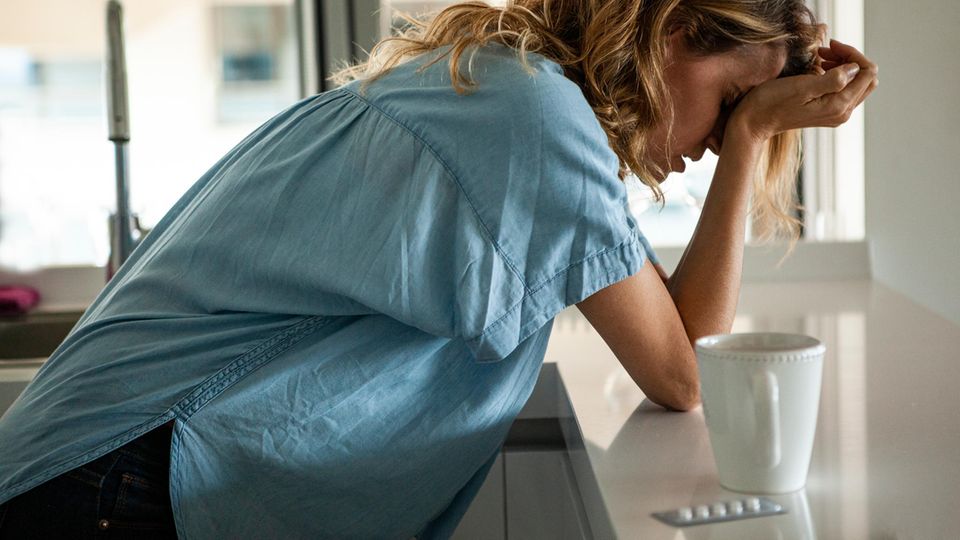Documentary “Pain subside!”
What does chronic pain and medication addiction feel like? Sophia Thomalla dares to experiment herself
Sophia Thomalla swallows a lot of tablets for the pain experiment – that has an impact.
© RTL Germany
Chronic pain is everyday life for many. So does taking medication. This often leads to dependencies. How does such a life feel? For the documentary “Pain Let Up!” Sophia Thomalla dared to experiment on herself. And regretted it more than once.
Pains. Every day. Every hour. Every minute. Always. This is the case for more than twelve million people in Germany. Mostly for years. In one in five people, chronic pain lasts over 20 years. Many of those affected are dependent on painkillers, often opioids, which quickly become addictive.
What does it feel like to be in constant pain? And how do (strong) painkillers affect the body and mind? Presenter and actress Sophia Thomalla searched for answers as part of the documentary “Pain let go! The self-experiment with Sophia Thomalla” and pushed herself to her physical limits.
Sophia Thomalla is in her early 30s and swallows ibuprofen like other sweets. She says she just doesn’t feel like dealing with pain for even a second. She doesn’t know how constant use of painkillers can affect her body. She has never read a leaflet in her life. Until the pain experiment.
Pain experiment: Thomalla deliberately makes herself a patient
Thomalla herself became a patient for the documentation. To do this, the chronic pain was simulated over weeks using pain simulators on the body and treated with medication under medical supervision, and she also tried out alternative treatment methods. In addition to the journey of self-discovery, she also visited specialists and pain patients.
Are in Germany According to the Epidemiological Addiction Survey, 1.6 million people are addicted to painkillers. This corresponds roughly to the number of alcohol addicts in the country. Doctors who prescribe strong painkillers too carelessly are also to blame. According to the Opioid Report, these are mainly used for illnesses that are not that serious at all. The majority of medications are prescribed by general practitioners.
Thomalla scores two Womenwho became addicted to opioids as a result of pain treatment. While Thomalla tests the effects of ibuprofen and opioids on her own body, the two women try to get off the opioids in a special clinic for multimodular pain therapy.
1.6 million are addicted to painkillers
Ibuprofen is an everyday drug. It is one of the best-selling medications in Germany. Like other non-steroidal anti-inflammatory drugs, paracetamol and diclofenac, ibuprofen acts on the nerve cells that are responsible for transmitting pain to the brain and blocks the messenger substance prostagladin. If you take the painkiller for longer than ten days, it can lead to a deficiency of the neurotransmitter, which in turn promotes heart attacks and stomach ulcers. There is also a 50/50 risk that long-term use of ibuprofen etc. will have an impact on liver and kidney values.
10 pictures
Opioids, such as oxycodine, tramadol and tilidine, have an even more serious effect. Opiates are very similar to the body’s own endorphins, but are up to a hundred times more powerful. Aside from side effects such as drowsiness, confusion and forgetfulness, they can become addictive after just a week. Side effects that Thomalla quickly feels.
You can see why Thomalla had to stop the opiate experiment and how the two pain patients were able to receive more help in just a few weeks than any treatment in previous years “Pain go away! The self-experiment with Sophia Thomalla” from November 15th on RTL+.
Source: German Pain Society, Opioid Report, Epidemiological addiction survey
The star belongs to Gruner + Jahr. The publisher belongs to RTL Deutschland.




